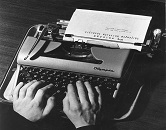THE DIOCESE OF TELŠIAI
PALANGA
During the postwar years, the members of the Astrauskas family were exiled to Siberia, where they suffered for eleven years. After returning to Lithuania, they found their homestead destroyed and their parents dead. As 1971 was ending, they erected a monument for them in the Palanga Cemetery. Next to their parents' grave the Astrauskases reserved two places for themselves, inscribing on the monument their birth dates. A talented artist designed the expensive monument. The monument failed to please only the Palanga city administration since its design reminded them of their deeds: the artistic bronze statue of Christ which had been overturned in the city park by a tractor and handed over to a scrap heap, the two destroyed statues of Mary on the Hill of Birutė, etc. On the Astrauskases' monument were depicted broken crosses and a Lithuanian girl with clasped hands praying: "Save us, O Lord!"
Sofija Astrauskienė was informed in writing that according to a decision reached on April 13, 1972, by the Palanga Executive Committee, the Municipal Works Department was charged with demolishing the monument. The woman appealed to the Palanga Executive Committee, to the police, but she was told there that the monument was designed improperly, that the words "Save us, O Lord" had to be struck off, that her and her husband's inscriptions had to be eliminated. Astrauskienė disagreed:
"The proper place for a monument without the name of God is only beside a tavern and not in a cemetery. I am a Catholic. I live and will die with the name of the Lord. If you're atheists and don't believe in God, why do you fear His name?"
"That inscription is anti-Soviet," the officials upbraided her. "All you would have to add is: 'Save us, Lord, from the Communists!' Change the inscription, or we'll tear down the monument!"
Astrauskienė wrote a complaint to the Council of Ministers of the LSSR, which referred it to the Ministry of Communal Farms, but the latter remained silent. The Council of Ministers of the LSSR replied negatively to a repeated complaint. Then Astrauskienė appealed to the Council of Ministers of the USSR but obtained from them merely a postal receipt, to the effect that the complaint had been received.
On October n Astrauskienė learned that government officials had gone to the cemetery to demolish her monument. When she arrived at the cemetery, she found there officials from the Palanga Executive Committee and many policemen and security agents. Workers had been brought here forcibly from construction sites and ordered to tear down the monument. Many of the younger workers resisted:
"We won't do this kind of work—tear it down yourselves!"
"If you won't tear it down, we'll dismiss you from work," threatened one official.
"We'll find a better job," retorted the workers and began to disperse.
Astrauskienė resolved to defend the monument. She stepped in front of it declaring: "As long as I'm alive you won't tear it down. Shoot me first."
"You're under arrest. Get away from the monument!"
Four secret policemen forcibly dragged Astrauskienė away from the monument, shoved her into a police car, striking her head severely in the process, and took her away to their headquarters, where Astrauskienė fainted. Only after a physician pronounced Astrauskienė to be in poor health, did the police allow her to return home.
The monument was pulled down using a tractor and taken away.









